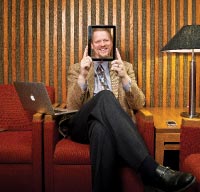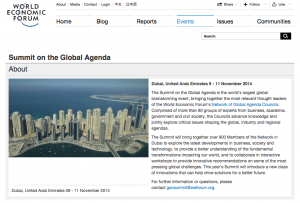It was 10 years ago this month that Minnesota Monthly, the magazine formerly published by Minnesota Public Radio, included me in its story called The Revolutionaries: 12 Minnesotans who are changing the way we think about the world—and its future.
I had started Mayo Clinic’s social media program as part of my role as manager for media relations, beginning with a makeshift podcast in 2005 and then branching into experiments with blogs and the various social networks.
By 2008 we were on Facebook, YouTube, Twitter and LinkedIn, and also had a news blog that eventually became the Mayo Clinic News Network.
I understood that as Mayo Clinic’s reputation had been built for 150 years through word-of-mouth, these platforms would be ways that word would spread between people in the 21st century.
While the rest of the world uses youtube to post videos of their cats curled into shoeboxes, Lee Aase is using the medium—along with Facebook, Twitter, podcasts, and blogs—to upend health care as we know it.
Minnesota Monthly, February 2012
Along the way I met up with co-belligerents as we created what would become the Mayo Clinic Social Media Network, and we even wrote a book called Bringing the Social Media Revolution to Health Care. Meredith Gould, Ph.D. was our editor, and besides Farris Timimi, M.D., my great friend and medical director for social media at Mayo Clinic, our contributors included
- Patricia Anderson
- Phil Baumann
- Ed Bennett
- Andre Blackman
- Chris Boyer
- Christopher Burgess
- Dave deBronkart
- Susanna French
- Dan Goldman, J.D.
- Dan Hinmon
- Shel Holtz
- Aldon Hynes
- Matthew Katz, M.D.
- Dana M. Lewis
- Howard Luks, M.D.
- Cynthia Floyd Manley
- Bertalan Mesko, M.D.
- Jill Plevinsky
- Mark Ryan, M.D.
- Mike Sevilla, M.D.
- Christian Sinclair, M.D.
- Reed Smith
- Wendy Sue Swanson, M.D.
- Robert West, Jr., Ph.D.
- Mary Pat Whaley
- Colleen Young
- Kelly Young
That was a magical time, as we experimented together and encouraged innovative applications of social media to promote health, fight disease and improve health care.
I have many fond memories from that revolutionary movement, and now I’m excited to help start another one through HELPcare and HELPcare Clinic.
Instead of a health care communications revolution, it’s a revolution in health care practice. My experience in the former has equipped me for this next one.
So has my personal health journey.
HELPcare is my new venture that provides metabolic health coaching, education and peer support for people who want to turn back the clock on their health through lifestyle changes.
HELPcare also provide management services for HELPcare Clinic, a new direct primary care practice my dear friend and high school classmate, David Strobel, M.D., opened in our hometown of Austin, Minn. on Feb. 1.
In just its first month of part-time operation, HELPcare Clinic already has more than 200 members, and positive newspaper and TV feature stories in our local market.
Today we’re announcing HELPcare Clinic’s Corporate Membership program, which gives small businesses who can’t afford ACA-compliant insurance a way to support their employees’ health and well-being.
Direct primary care is a growing trend. Likewise, many people are finding a low-carb, ketogenic diet combined with intermittent fasting is enabling significant health restoration.
I think the synergy between an affordable, membership-based medical practice that provides unhurried, unlimited primary care services in concert with lifestyle coaching that equips members to address underlying causes of disease will be powerful.
Hopefully even Revolutionary.

 Before I began my career in health care, I worked for 14 years in political and government jobs at the local, state and national level. The last of those was as press secretary for former U.S. Rep.
Before I began my career in health care, I worked for 14 years in political and government jobs at the local, state and national level. The last of those was as press secretary for former U.S. Rep. 